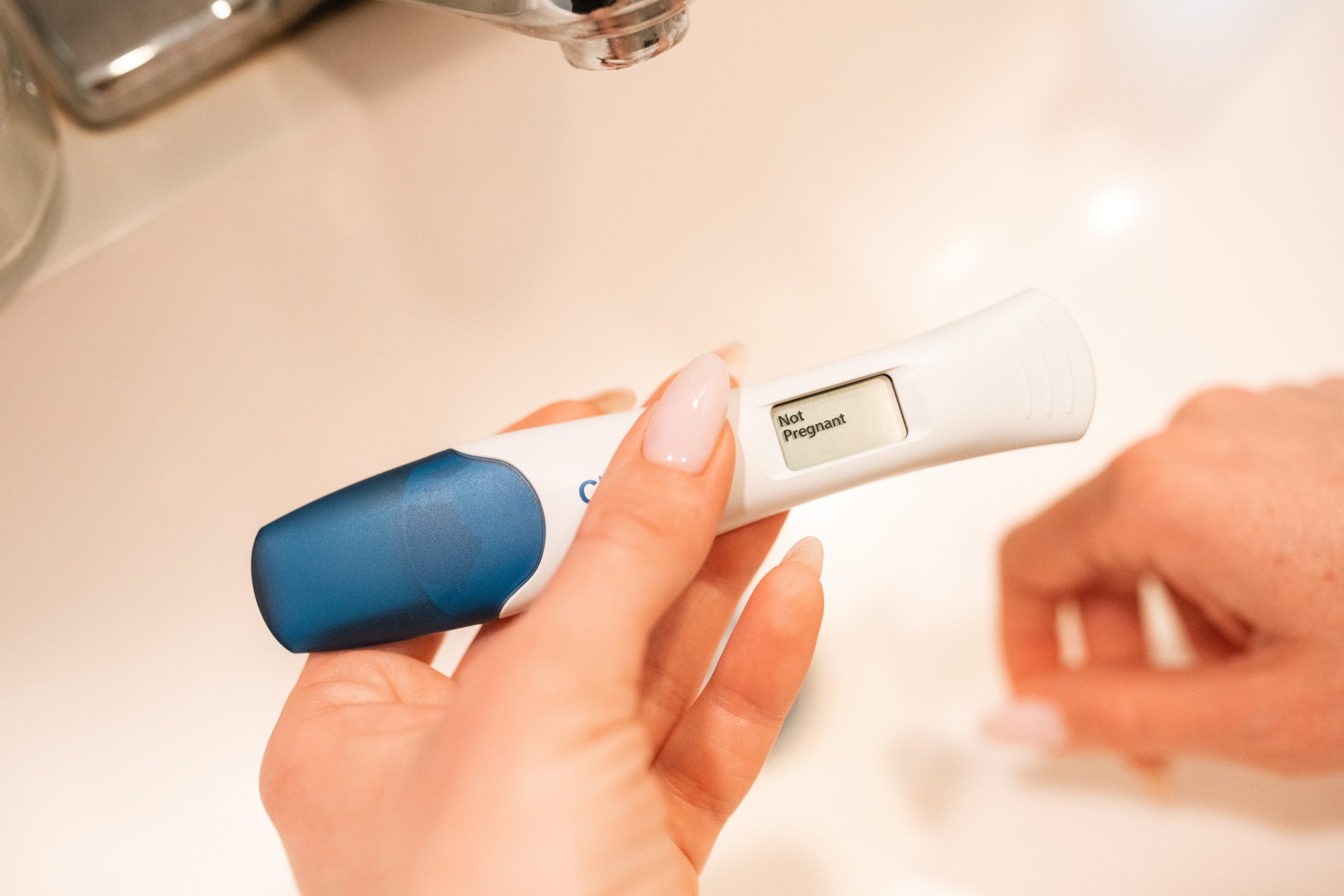
The Ultimate Guide to TTC Treatment: What You Need to Know
A Comprehensive Guide to Trying To Conceive Treatment (TTC) Options
For many young couples, one of the most exciting times is when they are beginning to plan for having children. Even with all the changes that children bring, most young couples look forward to bringing children into the world and raising a family. However, it is more challenging to conceive than you may think. The process can be stressful and filled with expectations, limitations, and the possibility of conception difficulty.
Many couples can try for years without much luck. Thankfully though, healthcare continues to improve and there are many treatment options available to improve your capacity to conceive. Having a healthcare professional guide you through the process of starting a family can ensure you are doing so successfully and taking the proper health precautions early on in the child’s development.
Difficulties in Conceiving a Child
Getting pregnant may seem like a fairly easy task to a young couple. However, genetics, certain health conditions, stress, injuries, hormonal imbalances, and more can make the process difficult. When problems with conceiving a child first crop up, many couples believe they need a little patience for conception to occur. While this may be true in most cases, underlying causes complicate the conception process that should be examined and looked into if conception proves evasive.
There are usually several stages of treatment for infertility. The first phase usually involves an appointment with an OBGYN doctor who will begin the process of helping the couple conceive. Having an OBGYN that you see regularly and trust is important for your overall well-being and increases your chances of having a child. If you do not currently have an OBGYN you should consult your primary care physician on who they would recommend.
Initial appointments with an OBGYN doctor often start with an essential examination and a list of recommendations to follow to bolster the chances of conceiving. These often include:
- Timing Intercourse To Coincide With The Woman’s Cycle Of Ovulation
- Lifestyle Changes
- Stress Reduction
- Hormonal Treatments
- Fertility Drugs
More Comprehensive Remedies For Fertility Problems
If these remedies fail to work after 6-8 months, the physician may recommend a phase two treatment plan. This usually consists of a series of tests to see if any underlying conditions affect the couple’s ability to conceive. These types of fertility tests are generally done on both the man and woman and include tests such as:
- Advanced Testing And Treatment For Hormone Levels For Both the Man and Woman
- Checking The Man’s Sperm Count
- Checking For Underlying Conditions Such as Endometrioses
- Testing For Ovulation Egg Production
After these tests have been completed, if there are any remedies available such as hormone therapy and fertility drugs, that can prove helpful, they are started. In most cases, these treatments prove successful though it may take as long as 2-3 years for pregnancy to occur. Although doing all of these steps can be exhausting, you must be patient with yourself, your partner, and your physician team. It may take time, but success can happen.
Advanced Conception Methods Alternatives
Couples who are unable to conceive traditionally often consult with a fertility specialist at a clinic or private practice when all other avenues have been exhausted without success. The specialist will then review the causation of infertility and look at the potential for surgical intervention or advanced fertility procedures.
Before choosing a fertility clinic make sure to ask questions about their specializations and if they take your health insurance plan. Different clinics have different success rates so it is important to shop around and choose the best option based on your situation and what you can afford.
Ask them about their pregnancy rate per cycle, the pregnancy rate per transfer, and the live birth rate. Often times you can find this on their website. The pregnancy rate per cycle will indicate how many have success when it comes to conceiving during their regular cycle. The pregnancy rate per transfer means the patient required embryo transfer for a successful pregnancy. The final statistics explain how many patients have a live birth at that particular treatment center.
You want to make sure that you not only have a good chance of conceiving with the help of this clinic but also carry the child to term. Make sure to also let your primary care physician know you plan on seeking out a fertility specialist as they may have a referral in mind.
Understanding Advanced Medical Procedure Options For Infertility
After an extensive exam and OBGYN medical records are obtained, fertility specialists often recommend more advanced fertility treatments to aid in the conception process. These treatments can include:
Surgery-A surgical treatment option can be especially vital to help unblock fallopian tubes, reverse sterilization procedures in either a man or woman, as well as procedures to retrieve eggs or sperm to be used for more advanced techniques of conception.
Intrauterine Insemination (IUI)– This procedure involves placing a thin tube, also known as a catheter carrying sperm directly into the woman’s uterus to the egg for fertilization. This procedure is often accompanied by the woman taking fertility drugs to ensure her ovaries produce at least one viable egg.
Couples who embark on the IUI procedure may choose to use their sperm or eggs, or if this is not a viable option, they may use donated sperm or eggs for conception. This is also the process often used for surrogacy to carry the pregnancy to term and delivery.
In Vitro Fertilization (IVF)– This procedure involves the surgical removal of a woman’s egg or eggs, often induced by fertility hormone drugs. The eggs are fertilized with sperm in a lab to produce one or more viable embryos. The successful embryo or embryos are then inserted into the woman’s womb through a thin tube to create a pregnancy so it can be carried to full term.
When IVF is chosen, the parents can use their sperm or eggs or donate sperm, eggs, or embryos, depending on their infertility needs.
Embryo Transfers– This procedure involves transferring one or more embryos from a previous IVF procedure into a woman’s womb that has been preserved and frozen in a process known as cryopreservation.
Consulting a Fertility Counselor
Going through fertility treatment can be physically and emotionally draining. There can be a lot of negative emotions that cause high levels of stress. This can leave you wondering if you still want to continue with the treatment if you have not had much success early on in the process. This can also cause strain on your relationship with your partner and your self-esteem.
If you find going through this treatment, is taking a toll on your mental health, consulting a fertility counselor can be a tremendous morale boost and remind you of why you want to have a family. They can also guide you through complex medical decisions together with your partner. After a successful conception, they can also provide you with parenting resources so that you are best equipped with raising your child.
In the unfortunate event that the pregnancy or treatment was not successful, a fertility counselor can also counsel you with this. They can help you explore other options such as surrogacy or adoption should you choose to go down that road.
Conclusion
Sometimes conceiving a child is not as easy as you may think. While it may seem like those in your social circle have had an easy time starting a family, this is not always the case. It is a lot more common than you may think to have reproductive problems. For 20% of people, it may take two years or more to conceive a child. Don’t feel shame or give up hope if you require medical intervention as this is more common than you may think.
With the right medical team, you and your partner can conceive a child. There are a number of treatment options available to you now with the advancement of technology. This begins with timing of ovulation, lifestyle changes, fertility medications, and hormonal treatment. If these do not work your physician can then explore underlying sexual health conditions such as endometriosis and low sperm count. From there if these are not successful various surgical options exist. Discuss what is right for your situation with your doctor and good luck on your journey to starting your new family!

Achieving Youthful Aging: Top Surgical and Non-Surgical Anti-Aging Treatments
Everyone has heard of aging gracefully, but not many people think about aging youthfully. Youthful aging requires looking at age in a different light, and instead of fighting the aging process, taking steps to promote youthfulness throughout our years. Youthful aging sustains confidence and self-image, no matter what age a person is. Everyone deserves to feel amazing in their skin, especially as they age. Your golden years shouldn’t be filled with a negative self-image but instead full of the radiance and wisdom age can bring. Here are some ways you can promote youthful aging in your own life.
Facial Cosmetic Surgery And Its Benefits
A great way to promote youthful aging is through anti-aging procedures. Cosmetic procedures aid in tightening the skin, contouring the jaw and cheekbones, and brightening the eyes. Procedures like facelift, brow lifts, and eyelid lifts bring youthful rejuvenation back to the face. Patients who undergo facial cosmetic surgery can experience youthful benefits such as:
- Eliminate fine lines around the forehead, eyes, and mouth
- Tighten loose skin around the cheeks, neck, and jaw
- Improve facial contours and rejuvenate facial skin
- Reduce the appearance of crow’s feet
- Correct asymmetry in the face
- Reduce sun damage on the skin
There are many incredible benefits to undergoing these procedures. Most patients report feeling years younger and regain their sense of confidence and well-being. Anti-aging procedures provide more than just turning back the clock for your skin. They allow the patient to look like they feel on the inside and maintain a youthful glow for decades to come. Some standard surgical procedures include:
- Eyelid Lift to correct any sagging or aging around the eyes
- Rhinoplasty or other nose-altering surgeries
- Facelift
- Neck lift
- Laser skin resurfacing to eliminate skin damage and scars
The Power Of Medical-Grade Skincare
Skin absorbs everything we put on it, including all the toners, serums, and creams we invest in. With all of the self-proclaimed “miracle” skincare, finding the best options for your skin can be challenging. Over-the-counter skin care isn’t necessarily wrong for a person’s skin, but it doesn’t provide the high-quality ingredients that promote youthful aging like medical-grade skincare. Medical-grade skincare can penetrate the skin deeper than over-the-counter products, providing better hydration, cleaning, and correction for all skin types. Additionally, the ingredients are more concentrated and perform at a higher rate than brands one finds in the drugstore.
Medical-grade skincare is FDA-approved and tested skincare that has been proven to benefit the skin in various ways. It contains higher-quality ingredients such as:
- Peptides
- Antioxidants
- Retinol
In addition to the improved ingredients, they often contain more significant amounts of these ingredients than over-the-counter skincare. Medical-grade skincare also eliminates the trial-and-error process that comes with over-the-counter skincare. These products are tested and work for each patient’s unique skin. Medical-grade skincare can be personalized, and certain products target individual concerns. Dermatologists and Raleigh plastic surgeons can both prescribe medical-grade skincare for patients.
A More Personalized Approach
One of the best ways to promote youthful aging is to work with your provider to create a personalized approach for your skin. Experienced cosmetic surgeons can combine surgical and non-surgical techniques to rejuvenate the skin and revitalize the face. Every patient is unique; some patients may need more skincare than surgical procedures, while others may require more. Combining medical-grade skincare with cosmetic procedures produces the best results for youthful aging. The right provider will be more than willing to create a custom and personalized plan for every patient.
Embrace Youthful Aging
Ultimately, youthful aging combines the idea of aging gracefully with treatments to promote a youthful appearance. By embracing the idea of aging and actively working to create rejuvenated, youthful skin, patients can experience the incredible benefits of youthful aging. Gaining confidence in who you are can also provide excellent benefits. Confidence will help the patient make informed and better decisions about surgical and non-surgical techniques to provide radiant, young skin. The benefits of embracing youthful aging include the following:
- Increased mental health
- Easier time falling and staying asleep
- Reduced chances of migraines
- Improved self-confidence and self-image
Overall, embracing youthful aging can significantly change a patient’s life. By choosing to change certain signs of aging and accept the rest gracefully, a patient can experience the joys and wonders of aging without stressing about their appearance. No one should have to accept fine lines or sagging skin without a plan in action. Youthful aging is one of the greatest benefits of the modern age.
Conclusion
Youthful aging with surgical and non-surgical treatment significantly improves a patient’s confidence and self-image. Dr. Jindal, a Raleigh plastic surgeon at Jindal Institute of Youthful Aging, has provided youthful aging procedures and treatments for decades. Through his care and dedication, Dr. Jindal knows how to help every patient on their unique journey to age youthfully and gracefully.









